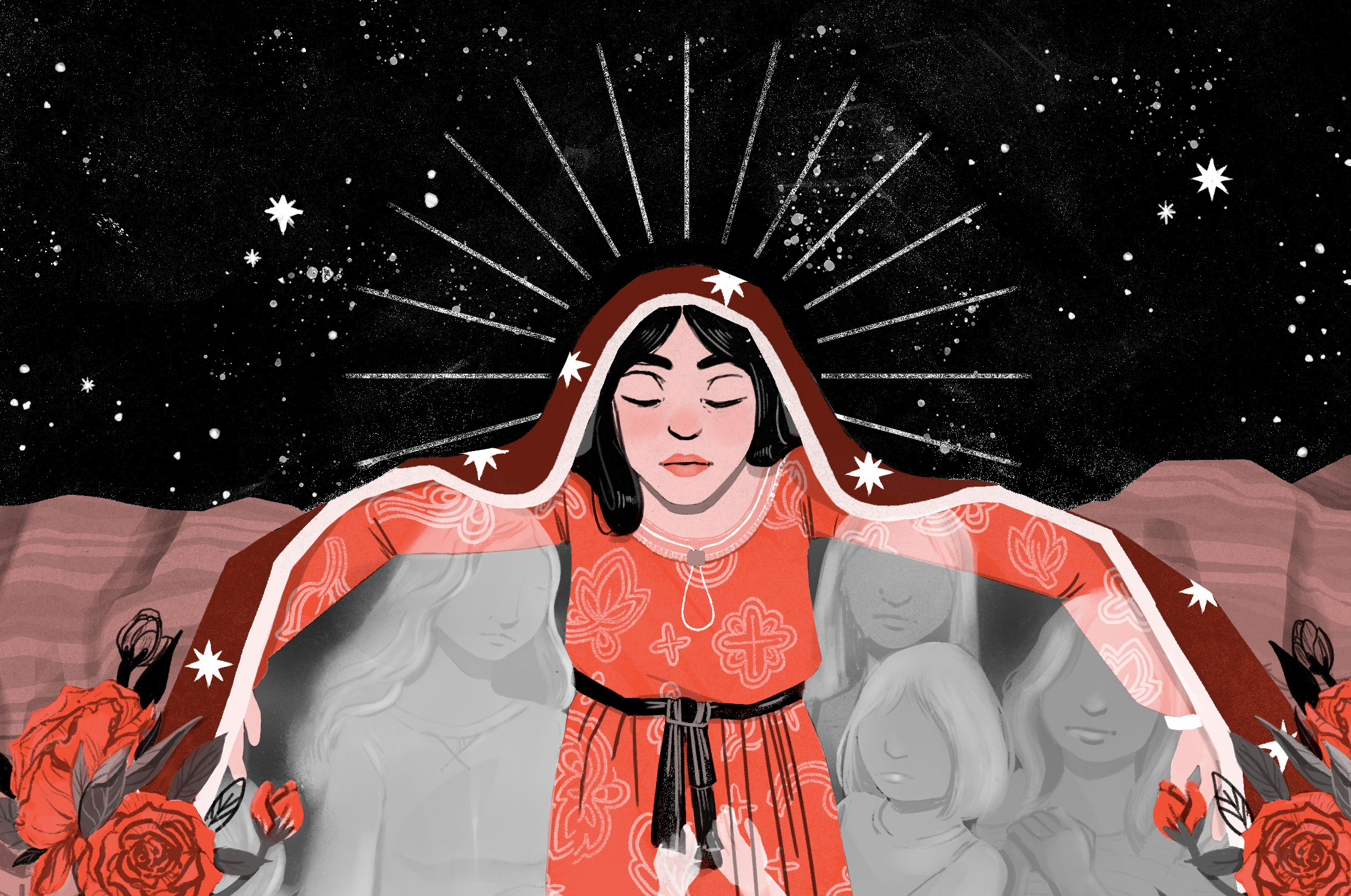 Scroll
Scroll
Border Acts
June 1st, 2021 | Issue one hundred thirty-six
1.
We were nearing El Paso when my phone rang. We’d been told someone would call with a location, and they did. Off the side of the highway, in a stretch of blight, a rusted shipping container read trump in white ten-foot-tall spray-painted letters. We were just two months away from the 2016 election. The voice on the other end told us to be at a street corner in Juárez at 4:30 p.m. Someone would pick us up.
The car ride was quiet, maybe because we were spooked. Along with the rest of the planet, we’d heard that, not that long ago, Juárez was the most dangerous city in the world. In the days leading up to our departure, I’d cycled through thoughts of calling it all off and then working up the courage not to. I imagined the others, my wife, and our university colleague Dominika, had done the same. I’d clicked through dozens of Mexican and US media stories and images of hyperviolence in the city—mutilated bodies hanging from overpasses, people slumped over in cars riddled with bullet holes, heaps of dead bodies in the middle of the day. All the stories presented Juárez as a charnel house, and the carnage a result of gangland violence rather than of a specific set of economic and geopolitical relations.
The plan was to cross the border at the Paso del Norte International Bridge, and meet someone—we didn’t know who—at the corner of Calle David Herrera Jordan and Rivas Guillén. Our understanding of Safari en Juárez was that it would not take place in a theater but in a variety of places across the colonias of Juárez, including in people’s homes, and that the performance would last approximately four hours. Six locals had each taken in an actor from a local theater company, and they’d lived together for approximately two weeks. They’d opened up their lives to one another and produced a text. Directors were then brought in to develop performances based on the texts. These were rehearsed, and then a run was announced.
It was four o’clock when we pulled in to a parking lot directly across from a pedestrian bridge at the US–Mexico border. As we paid the parking attendant—a spindly old man wearing a white tank top and pleated dress slacks—I remembered that the area around the bridge was where a Border Patrol agent named Jesus Mesa Jr. had shot and killed an unarmed fifteen-year-old boy named Sergio Adrián Hernández Güereca in the summer of 2010. I remembered that, on and around the day of the shooting, news reports had prominently featured information from official sources—a spokesperson for the FBI told the El Paso Times that the agent had shot the teen after a group of Mexican nationals “surrounded the agent and threw rocks at him.” The Associated Press reported on the boy’s alleged ties to illegal smuggling, and The New York Times ran a story that ended with two paragraphs about the supposed danger and seriousness of “rock attacks.” But cell phone video emerged of a scene that, to me, very clearly looked like a Border Patrol agent—who was not surrounded—executing a fleeing boy who’d stopped to look back at his captured friend. In 2012, at the conclusion of its investigation, the Justice Department reported what it saw: “insufficient evidence to pursue federal criminal charges.” And in February 2020, the Supreme Court of the United States ruled that the Border Patrol could not be sued for the boy’s killing.
Halfway across the bridge, I stopped to look down for any visible sign of where the shooting had occurred, but saw only white graffiti on a concrete embankment that read berlin wall. There was chain-link fencing everywhere, and it felt very much like an open-air prison, not a bridge, which is usually a place of connection and exchange. This was all part of an apparatus of immiseration and ultimately death—something that would become brutally obvious in the next few years, when the Trump administration would refine an already abysmal asylum process in response to the migrant caravans. Asylum seekers attempting to present themselves to authorities would be turned away and left marooned in the limbo created by US law and neo-imperialist policies toward Latin America. Many of them would sleep at the bridge’s base, waiting months before they were able to be considered, only to be denied and turned away.
You have reached your article limit
Sign up for a digital subscription and continue reading all new issues, plus our entire archives, for just $1.50/month.
Already a subscriber? Sign in





